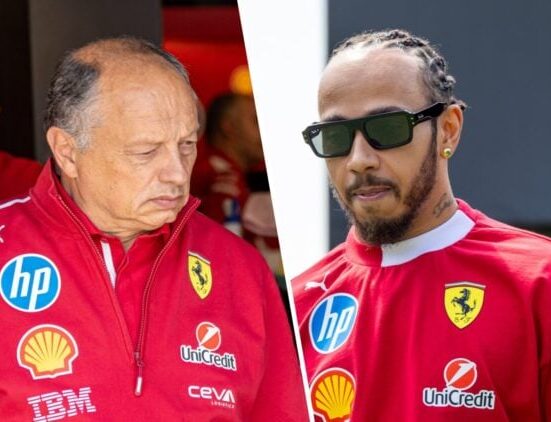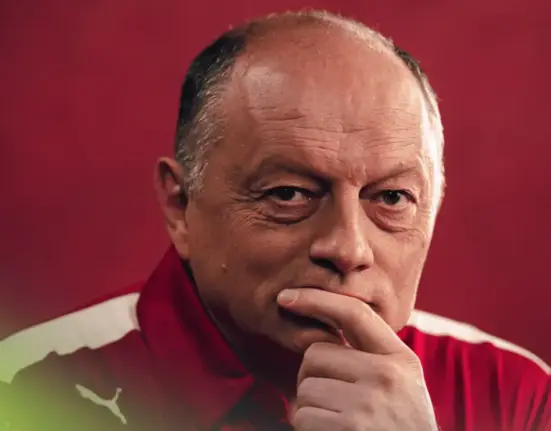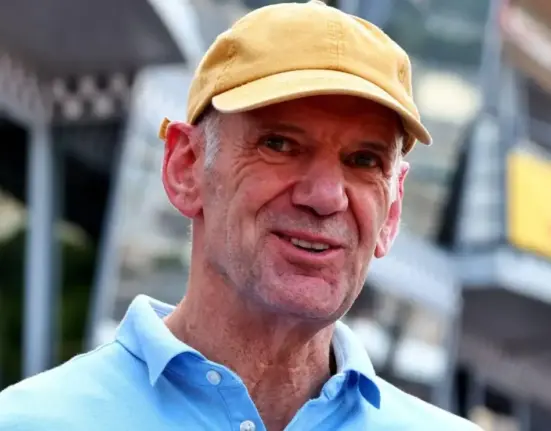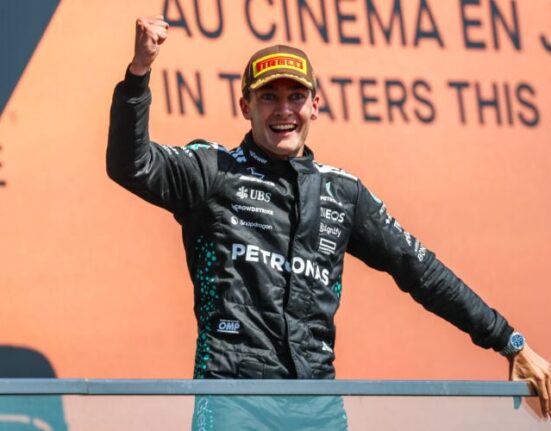Just like last year’s Italian Grand Prix in Monza, the Bahrain Formula 1 race weekend turned out to be a low point for Red Bull. Max Verstappen spent large parts of the race battling with Alpine and Haas, although he managed to limit the damage by finishing sixth.
That Monza misery served as a wake-up call for the team, even prompting changes to the development trajectory of the RB20. “Yes, upgrades that were scheduled had to be adjusted in certain areas,” Verstappen acknowledged when speaking to Dutch media, including Motorsport.com, in Jeddah.
Verstappen clarifies that the current situation is slightly different. Yes, some of the issues are still the same but, according to him, Bahrain’s setback doesn’t mean that the whole development path has to be changed again. “No, because now we at least know what our problems are,” he added. “Until Monza last year, it was more that we didn’t know where to look or what to search for. That’s a bit clearer now, which gives us hope that we can bring updates to hopefully change the balance of the car.”
Still, Verstappen admits that last week’s picture is worrying: “Bahrain was very tough for us, and clearly those are not the positions we want to be fighting for – that’s pretty obvious.”
It means that rapid progress is needed, but Verstappen stresses that the urgency is now being felt throughout Red Bull. “It’s already like that for some time, but now we need to find the extra performance and really extract it from the car,” he said. “We need updates to shift the balance.”
Can future upgrades work despite correlation issues?
Tricky car left Verstappen floundering in the midfield in Bahrain
Photo by: Clive Mason – Getty Images
But the question then turns to how effective are those upgrades likely to be. That question relates to two points that Horner raised in Bahrain on Sunday evening: the balance issues are still similar to last year’s, and the correlation with the wind tunnel remains a problem. At first glance, both can be problematic for the team’s car development. While Red Bull has indicated that on-track data is now leading in updating the RB21, the outdated wind tunnel remains a handicap. If the wind tunnel gives different signals than reality, where can Verstappen find the confidence that upcoming updates will work?
“I mainly rely on the fact that they’ve already got experience with this wind tunnel not always showing exactly how things are at the track,” Verstappen explained when asked by Motorsport.com in Jeddah. “They do have a certain direction based on past experience with the wind tunnel, so they know roughly where to go. The issue is that sometimes they can’t see the finer details in the wind tunnel. Then it becomes a matter of trying things on track.”
However, modern Formula 1 allows limited room for trial and error. Teams are restricted by the budget cap and limited aero testing under the ATR system. And trying things on track outside of race weekends is almost impossible due to testing restrictions. It means that step one – understanding the issues – may have been achieved, according to Horner, but step two – introducing effective solutions – is far from guaranteed at the moment. Simply calling for updates is too easy; the real question is how Red Bull will make them work on track without being able to fully rely on its virtual tools.
Can the technical team turn things around without Newey?
Red Bull has been unable to rely on Newey to turn things around this time
Photo by: Alexander Trienitz
The fact the problems are similar to last year highlights that the technical team hasn’t been able to solve them over the winter – despite hopes to do so. The upgrade package from Austin last year was a first patch, with the expectation that structural issues would be fixed with the new car. But the technical team led by Pierre Wache hasn’t fully delivered on that so far.
“It’s not so much hit-and-miss, but it’s simply not enough yet,” Verstappen agreed. “The differences between last year’s car and this one aren’t big enough to get a different balance.”
It raises the question of how much faith Verstappen still has that the technical department can deliver a quick turnaround in 2025. His response during the Dutch media session remains a bit cryptic: “For me, it’s not really about trust. I just try to get the most out of the car myself and make the best of this situation. And by 2026, it can be completely different again.”
That ties in with what Horner said: the outdated wind tunnel may be less of an issue heading into the new regulations. The shortcomings mainly become apparent when it comes to fine-tuning, rather than the bigger design concepts – and those are more prominent at the start of a new regulation cycle. “In 2022 and 2023 we did well, and that was with new regulations – and the same wind tunnel,” Verstappen pointed out. “And when new rules came in 2014, in 2014, 2015, and 2016, Red Bull also had a strong car, just the engine wasn’t good enough.”
However, there are two caveats: the performance of Red Bull Powertrains is still a question mark, and 2026 will be the first major regulation change in Red Bull’s history without Adrian Newey involved.
Imola and Barcelona will be key moments for Red Bull this year
Verstappen isn’t panicking despite the current troubles
Photo by: Zak Mauger / Motorsport Images
Despite all these factors, Verstappen remains remarkably calm. Even after the conclusion that the current technical team hasn’t been able to fix the balance issues so far, he responded: “Yes, they’re still working on it. This isn’t where we want to be of course, but what can I do? I can scream and shout, but that won’t help.”
Asked to clarify his comments on potentially new chances in 2026, as he still wants to fight for this year’s title as well, he replies: “Of course I want that, but unfortunately, you can’t always win everything.”
It shows that Verstappen accepts he can’t do much more than he already does: trying to improve the situation behind the scenes and maximising his own performance on track. That doesn’t mean he’s giving up on Red Bull, though, as he told the Dutch media: “I think every driver wants to be in the fastest car. That’s very normal. But, when things don’t go your way, you don’t have to run away immediately. I’m doing everything for us to become more competitive again.”
He’s been pointing out the issues internally for a while – even when he was still winning races last year – and now it’s up to the team to deliver. The correlation troubles and failure to resolve all the problems over the winter might not be the most encouraging signs for a turnaround, and that’s why Verstappen says he doesn’t expect a McLaren-style recovery like last year.
But he remains calm. Verstappen knows that for his long-term future doors might open if needed, as Helmut Marko has made clear as well. The pressure is more on Red Bull than on Verstappen for both the long-term and the short-term future. When it comes to the latter, Imola (where a large update package is expected) and Barcelona (where the FIA will clamp down on flexi-wings even further) are seen as key moments for the team’s fortunes this year, but Verstappen doesn’t want to overthink it: “We’ll see how much those things will help us. But again: I just do what I can, and I’m very relaxed at the moment…”










Leave feedback about this